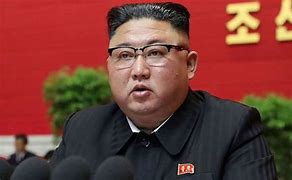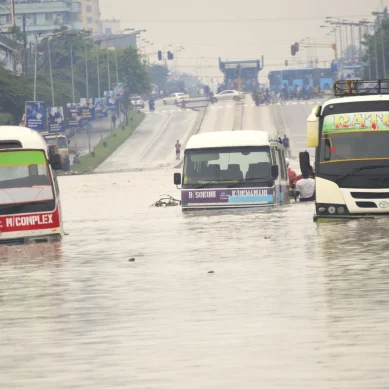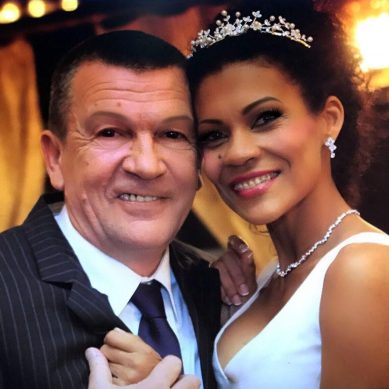
In 2002, in response to the 9/11 terror attacks and growing concerns about loose nuclear materials, the US science and security board adjusted the clock to seven minutes.
My father died that December, after a lifetime of anti-war activism. He spent the last year of his life trying to jumpstart a “national strike” for nuclear disarmament.
In 2007, after North Korea tested its first nuclear device, the Bulletin moved the clock ominously to five minutes to midnight and the science and security board added human-made climate change to the doomsday formula.
In that announcement, they wrote, “As we stand at the brink of a second nuclear age and at the onset of an era of unprecedented climate change, our way of thinking about the uses and control of technologies must change… The clock is ticking.”
In 2010, the Bulletin inched the minute hand back up to six, thanks to the Copenhagen accord on climate change and new negotiations between the US and Russia on arms reductions.
Between six minutes and five minutes to nuclear midnight, I got married, pledging to work for the abolition of such weaponry with my husband, who grew up in southeastern Connecticut, protesting at submarine christenings and launches at a US naval base on the Thames River.
Thanks to new North Korea aggressiveness (by President Kim Jong Un) and general global intransigence on climate-change commitments, 2012 saw a modest drop to five minutes. That was a “time” that took on a new kind of urgency for me after the Sandy Hook school shootings that killed six teachers and 20 kids about the same age as my dear stepdaughter in nearby Newtown, Connecticut.
Her school beefed up security in response, checking IDs and barring parents from the building. Every day, when I carried my new-born son to pick up his sister, I had to go through an elaborate process at dismissal time in a state of near panic, flinching at any loud noise and feeling both the fragility of my kindergartener’s life and the threat to all life from nuclear weapons.
After all, the Sandy Hook killer had but a small arsenal compared to what the United States threatened the world with every day.
By 2015, Russia and the US had both announced new spending to “modernise” their nuclear arsenals and, in climate terms, it was the hottest year on record. The Bulletin ominously moved the hands of the clock to three minutes to midnight for the first time since the Cold War year of 1984.
By then, I was the mother of two toddlers, born in 2012 and 2014, and my stepdaughter was nine. Those three wonders helped me stay focused on the beauty of each day and the extraordinary web of life that the growing nuclear arsenals on this planet eternally hold hostage.
I recommitted myself then to taking the nuclear threat seriously, but without hectoring my kids about the Doomsday Clock the way my dad had done with me.
In 2017, the Bulletin moved those clock hands 30 seconds closer to midnight, its first half-minute move ever in response to President Donald Trump’s inflammatory nuclear rhetoric, soaring Pentagon budgets, and new threats to the global climate.
A year later, in 2018, we lost another 30 seconds and the clock hit two minutes to midnight, as the Bulletin pointed out that international diplomacy had been “reduced to name-calling, US-Russia relations featured more conflict than cooperation, the Iran deal was imperiled, and greenhouse gas emissions rose anew.”
Though no longer a kid, I still found myself watching a parent being hauled off to jail. This time, it was my mother, then 79, arrested for trespassing with six friends at the Kings Bay Naval Base in Georgia in a move to symbolically disarm the Trident nuclear submarines there.
In 2020, the Bulletin’s clock moved to 100 seconds to midnight, while citing the two existential dangers of climate change and nuclear weapons in its press statement.
Over the next two years, the magazine did something new. It didn’t change the hands on the clock but issued press releases about why they remained at 100 seconds.
Meanwhile, in 2021, the kids and I helped make 68 signs thanking each of the nations that had adopted the UN Treaty on the Prohibition of Nuclear Weapons. My kids poured their hearts into those works of art, adorning them with silver paint and sparkles.
That treaty celebration day in New London where we live was cold and windy and the two little ones were almost hidden behind their signs, while they asked me lots of questions about Honduras and the island of Nauru which I gamely tried to answer without resorting to Wikipedia.
An adage attributed to Mark Twain came to my mind then: “War is how Americans learn geography.” I smiled, thinking that my kids were learning geography through protest and peacemaking.
And then, this January, the Bulletin‘s science and security board again shaved the time by seconds, announcing that it was now 90 seconds to midnight.
In the 76 years since its creation, the minute and second hands of the Doomsday Clock have moved 25 times, back and forth – tick, tock, tick, tock – from 17 minutes to midnight at its furthest from imminent danger to the present 90 seconds to midnight. What lies on the other side of midnight?
On a normal clock, 12:01 would simply begin a new day, a new chance to learn from the past and adjust your path to the future. The question now is whether such a 12:01, a future without the Doomsday Clock, without the existential threats of nuclear weapons and climate change is even imaginable.
- By Frida Berrigan, author of It Runs in the Family: On Being Raised by Radicals and Growing into Rebellious Motherhood











